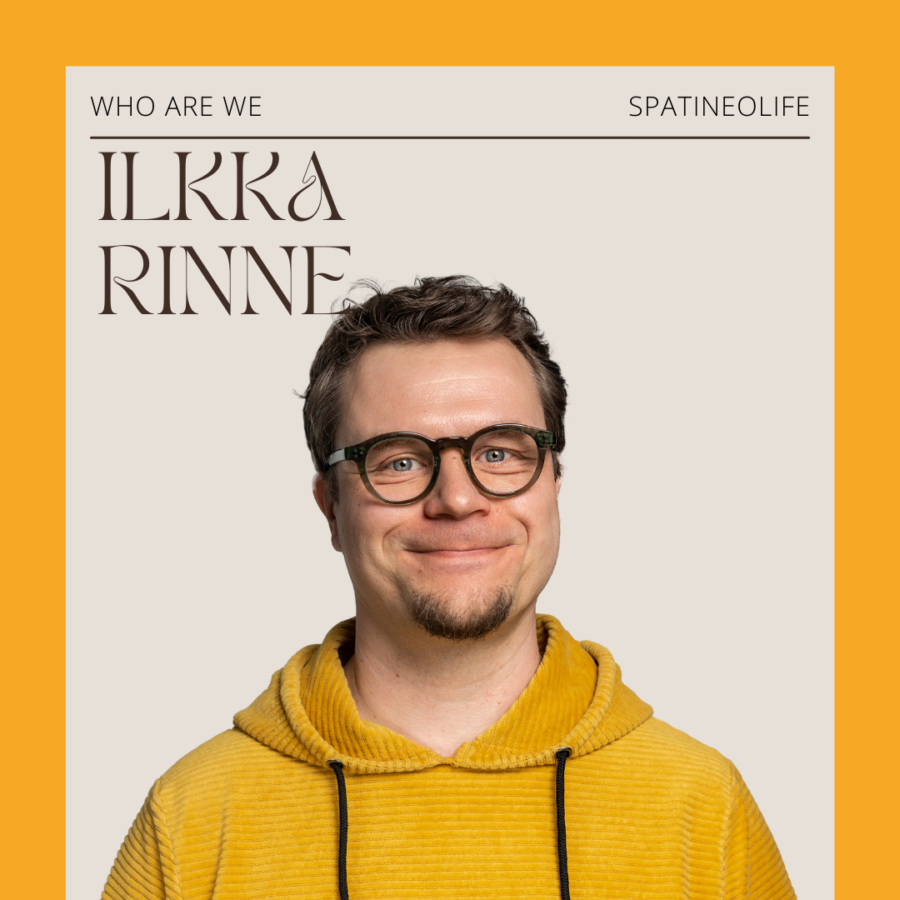
Who are we? – Ilkka Rinne
1.) Name, title and when did you start working at Spatineo?
Hi all, I’m Ilkka Rinne, Interoperability Architect and one of the two founders of Spatineo back in 2011. Since then I’ve been working in different roles in the company, including CTO, Head of Customer Experience and Interoperability and as a member of the management team.
2.) What do you do at Spatineo in practice? Tell us what kind of cases, projects and work you will be doing in the future!
In my current customer projects I mostly focus on data modelling and encoding related work. In practice this means learning from the data domain experts and their use cases, and capturing the essentials into conceptual, logical and physical data models that can be used to process, store and exchange this information between different IT systems in standardised, interoperable way. I use visual tools such as Miro a lot for drafting the concept and their relations and UML as a more formal language in describing and presenting the data models.
Examples of my recent and current activities include designing the national data model for digital spatial planning (zoning) in Finland (Kaavatietomalli) and related regional and urban area planning models, project lead for the revision of the ISO Standard for observations, measurements and samples (ISO 19156, OMS) and its JSON encoding standardisation work.
My technical experience in coding, software and database design as well as user experience design help a lot in bridging the gap between the domain experts and the software developers when designing and implementing the data models in practice. I’m happy to be able to share my insights and learn together with our growing data modelling crew at Spatineo, and occasionally I still get to do some code too!
3.) What is the best thing about your work?
I get to learn from the best domain experts in various fields and leverage my talent and experience from international standards and implementation projects, and help formalise the common understanding in a way that both humans and computers understand. I also enjoy working together with the best of the best technical experts in international IT standardisation efforts in organisations like Open Geospatial Consortium (OGC) and ISO.
Data and software design is compromising between the various user needs, new interventions and compatibility with legacy systems, and the level of detail for the required technical harmonisation. It’s satisfying to see one’s ideas turned together into specifications and applications that enable people to achieve more and get less frustrated in their daily work.
4.) And the best thing about Spatineo?
We have a very nice mix of deep technology experience, solid user needs understanding, engaged sales and project management expertise, and proven leadership. We are an open-minded group of senior and junior experts in which everyone’s views are heard and appreciated. It’s such a privilege to work together with such people in solving the toughest challenges in the world for the benefit of all.
5.) What technologies (geospatial or not) fascinate you the most? What technologies should be utilized more in the future?
I was coding my first HTML pages as a freshman in the University of Helsinki in 1994 when the Web and browsers were pretty new, and oh boy it’s been a ride to see the web and browser technology evolve into what it is today! Technologies come and go, but the concepts of messaging and asynchronous/parallel processing have for some reason always fascinated me. I guess it originates from various ball track and water flow games I used to play as a kid. There is something magical about a mechanical system with a lot of big and small parts all participating in a bigger whole.
AI in its various forms is already a game changer in many application fields, including processing and leveraging location data and sensor-originated information. It’s certainly intriguing to see what kind of roles the Semantic Web and ontology technologies combined with machine learning eventually play in our daily lives 5-10 years from now. And how will teams of software designers work with their AI assistants/trainees a few years from now? Who will have ownership over personal data and the personally trained AIs? Can you take your AI assistant with you when changing from one company to another in the future?
Sieving relevant pieces of information for a particular time and place from the abundance of data flows around us is going to be critical, and we will need AIs we can trust and fluid location technology to help us manage it.
-
Who are we? – Tiina LeTina Le is Spatineo’s HR Specialist, and her work involves making Spatineo a great place to work! Read more about Tiina and her work from out blog!
-
Who are we? – Ilkka RinneIlkka Rinne is a longstanding GIS & Data guru, and he has seen almost everything when comes to IT and the development of data.
-
Who are we? – Gerald “Junnu” LeeWho is Gerald Lee and what technologies are his specialty at Spatineo?
-
Who are we? – Stanley FestusWho is Stanley Festus and what technologies are his speciality at Spatineo?
-
Who are we? – Oskari HäkkinenWho is Oskari Häkkinen and what does he do as the CEO of Spatineo? And what is his focus at the company currently?
-
Who are we? – Pauli Sairanen1.) Name, title, what you will be doing at Spatineo? Hello, I am Pauli Sairanen, a Software Designer here at Spatineo. I started as a trainee in spring 2021 and just recently started working full-time. 2.) What do you do at Spatineo in practice? Tell us what kind of cases, […]






